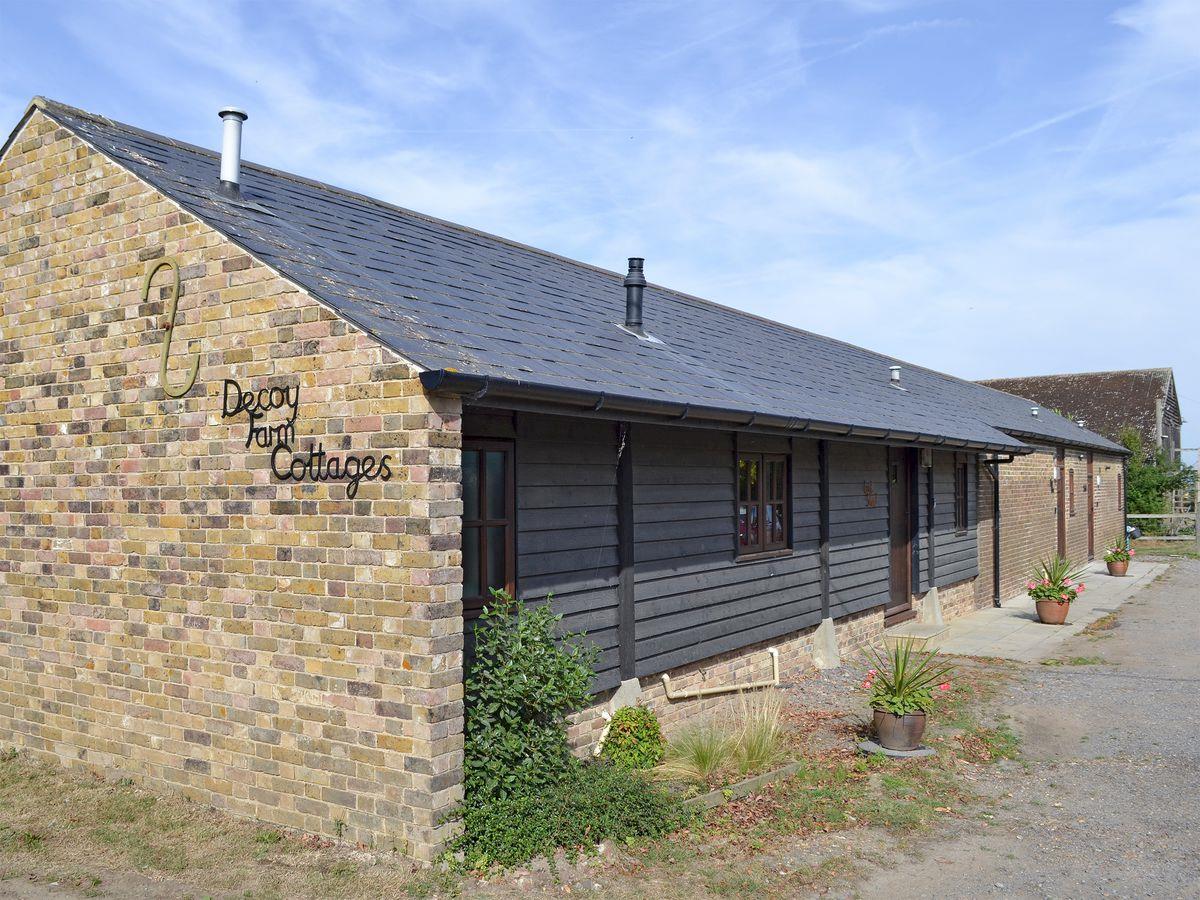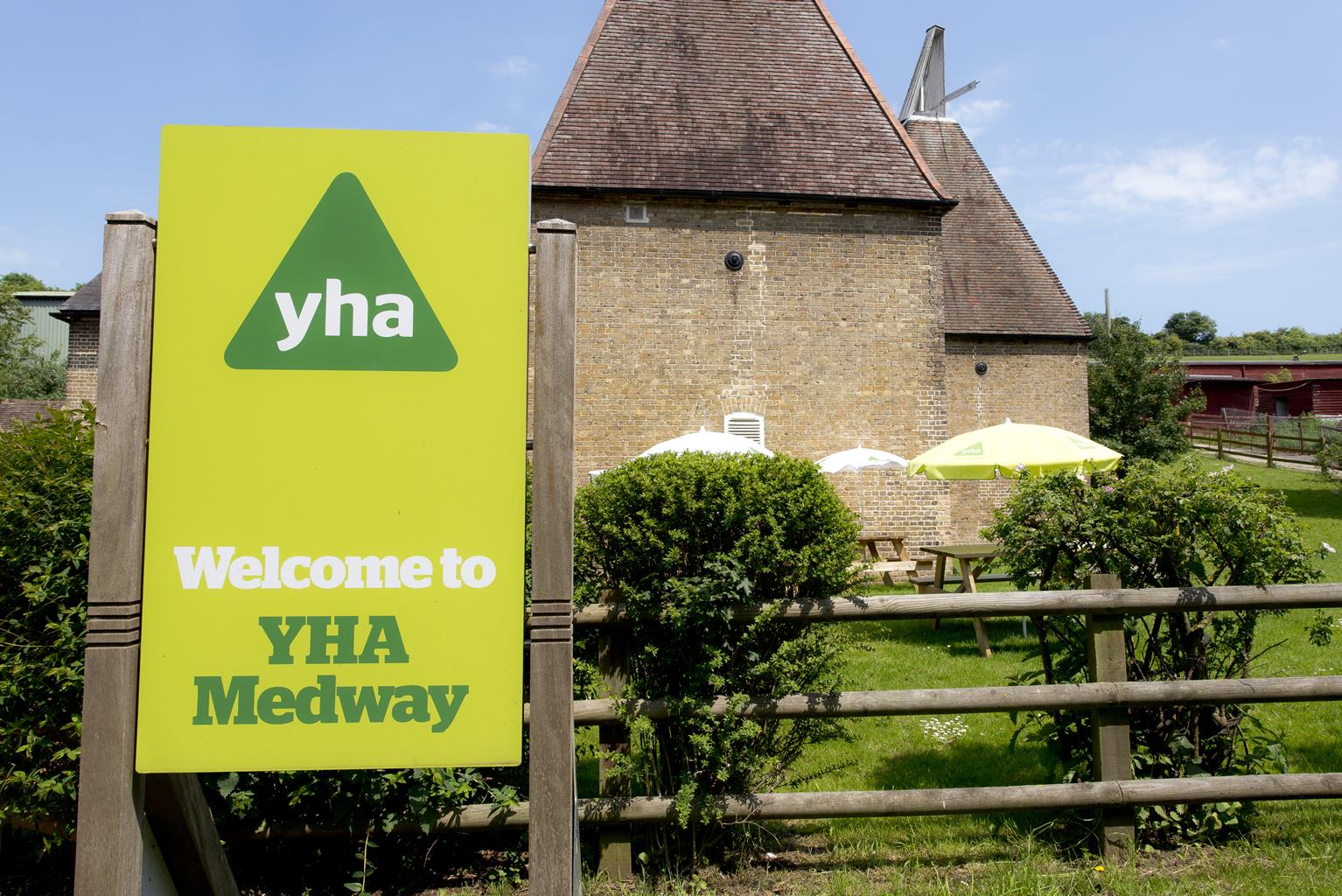A working fruit farm that makes the perfect retreat from the hustle and bustle of everyday life…
Exploring the marshes around High Halstow

Squaring the circuit around an evocative Dickensian setting, where a nature reserve protects Britain’s largest heronry.
4.75 miles (7.6kms)
About the walk
This rectangular walk follows a quiet route from the nature reserve of Northward Hill via the tiny settlement of St Mary Hoo, partly along the long-distance Saxon Shore Way.
The spur of marsh and low sand-and-clay hills between the Thames and Medway estuaries has been settled since the Bronze Age. The Romans made the first attempts to build sea defences and drain the marshes, and later it became a Saxon ‘hundred’. At the eastern end of Hoo lies the Isle of Grain, a futuristic expanse of power installations and container terminals. The rest of Hoo is mainly rural, populated by wild birds and grazing stock.
For centuries, the Hoo peninsula was a lonely and inhospitable place, its waterlogged soils too saline for agriculture, the marshes infested with mosquitoes. In the 19th century, convict hulks were anchored just offshore, and their desperate, shackled cargoes were vividly conjured by Charles Dickens in the opening scenes of Great Expectations (1860). But the marshes also provided a haven for wildlife, which suffered when they were drained in the 20th century.
This patchwork of woods, grassland and hawthorn scrub at Northward Hill Nature Reserve (RSPB) attracts many unusual birds, including avocets, egrets and nightingales. The reserve’s most distinctive species is the grey heron – more than 180 pairs breed here each year. Walking trails criss-cross the reserve, with dramatic vantage points at intervals. Spring is a good time to visit, when the herons are nesting and the woods are carpeted in bluebells. But you can spot interesting birds at any time of year, especially in winter when the trees are bare.
Walk directions
Take the fenced footpath beside house No. 15 at the far end of Longfield Avenue. Turn left and left again through a kissing gate, then walk up the right edge of the field ahead. Bear right through the hedgeline and take another kissing gate into arable fields.
Following the Saxon Shore Way, go ahead across the fields until you reach Decoy Hill Road. Turn briefly right, then left round a bend. Pick up the Saxon Shore Way ahead, across a field, and follow this to reach a footpath crossroads.
Turn left off the Saxon Shore Way and take a grassy track between hedges. Cross a stile and keep going, skirting to the right of a tree-lined hollow. At the field margin, cross a stile, then another a few paces to your left. Follow the fenced path downhill past brambles (watch out for rabbit holes).
At the bottom you will meet Decoy Hill Road again. Continue along the winding lane as far as a farm, Swigshole, where the road ends. Take the track ahead via a stile beside a locked gate. In a few paces meet a footpath junction, one bearing left across the marshes.
Turn right through a gate along the fence-line, following orange markers. Continue eastwards for about 0.75 miles (1.2km), parallel to the estuary. When you meet another path crossing at right-angles, turn right again, following waymarkers over several fields divided by gates (use the stiles if they’re closed). Keep ahead when the land starts to rise more steeply. Make for a thin copse, leaving it on your right over another stile. Just past the end of the copse the footpath merges with a track leading from your right.
Bear left uphill, then right through a waymarked gateway past two barns. Ahead in the distance you will see a tall industrial chimney and closer at hand, slightly to your right, the square tower of St Mary Hoo church. Zig-zag past Ross Farm, bearing left at a handful of village cottages to visit the church.
Retracing your steps a few paces to the first bend, now follow the track straight ahead across open fields towards Newlands Farm, taking steps to the right of the path to avoid wandering into its grounds. Walk through a bank of ornamental trees, past a duck pond, and continue ahead on the field track to reach the footpath crossroads again. Retrace your steps via the Saxon Shore Way to your starting point.
Additional information
Quiet lanes and farm tracks or footpaths, mostly well signed across fields; many stiles
Fields and marshes
Lead required within nature reserve (no dogs allowed on certain trails)
OS Explorer 163 Gravesend & Rochester
Street parking at far end of Longfield Avenue (turn off High Halstow’s main street at the RSPB Woodland car park sign)
The Street, High Halstow, beside village hall
WALKING IN SAFETY
Read our tips to look after yourself and the environment when following this walk.
Find out more
Also in the area
About the area
Discover Kent
The White Cliffs of Dover are an English icon – the epitome of our island heritage and sense of nationhood. They also mark the point where the Kent Downs AONB, that great arc of chalk downland stretching from the Surrey Hills and sometimes known as ‘the Garden of England’, finally reaches the sea. This is a well-ordered and settled landscape, where chalk and greensand escarpments look down into the wooded Weald to the south.
Many historic parklands, including Knole Park and Sir Winston Churchill’s red-brick former home at Chartwell, are also worth visiting. Attractive settlements such as Charing, site of Archbishop Cranmer’s Tudor palace, and Chilham, with its magnificent half-timbered buildings and 17th-century castle built on a Norman site, can be found on the Pilgrim’s Way, the traditional route for Canterbury-bound pilgrims in the Middle Ages.
In the nature reserves, such as the traditionally coppiced woodlands of Denge Wood and Earley Wood, and the ancient fine chalk woodland of Yockletts Bank high on the North Downs near Ashford, it is still possible to experience the atmosphere of wilderness that must have been felt by the earliest travellers along this ancient ridgeway.
Nearby stays
Restaurants and Pubs
Nearby experiences
Recommended things to do
Why choose Rated Trips?
Your trusted guide to rated places across the UK
The best coverage
Discover more than 15,000 professionally rated places to stay, eat and visit from across the UK and Ireland.
Quality assured
Choose a place to stay safe in the knowledge that it has been expertly assessed by trained assessors.
Plan your next trip
Search by location or the type of place you're visiting to find your next ideal holiday experience.
Travel inspiration
Read our articles, city guides and recommended things to do for inspiration. We're here to help you explore the UK.













